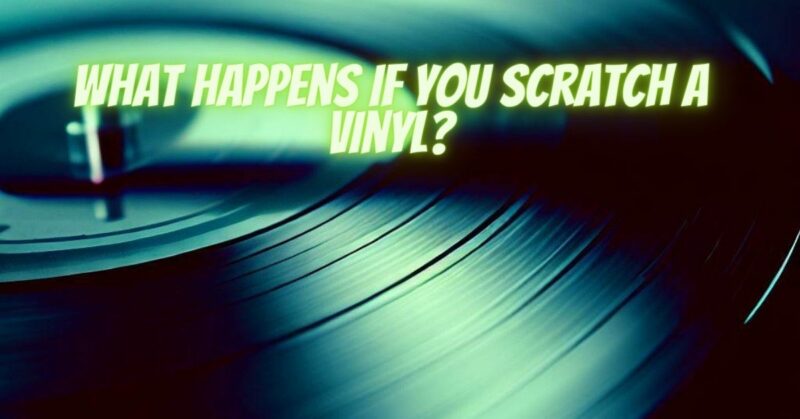Vinyl records hold a unique place in the hearts of music enthusiasts, offering a tangible and nostalgic way to experience music. However, this delicate medium requires careful handling to preserve its sonic quality and longevity. One question that often arises is: what happens when you scratch a vinyl record? In this article, we’ll explore the mechanics of scratching, the impact on the record, and the steps you can take to prevent and address scratches while still enjoying your vinyl collection.
The Dance of Grooves and Stylus
The magic of vinyl lies in the intricate grooves etched onto the surface of the record. These grooves contain the audio information, and a stylus (needle) attached to a turntable’s tonearm follows these grooves, translating them into sound. When you scratch a vinyl record, you’re intentionally introducing lateral movement to the stylus as it tracks the grooves.
The Impact of Scratching
Scratching a vinyl record can have several negative consequences:
- Groove Damage: Scratching introduces friction between the stylus and the grooves. This friction can wear down the grooves unevenly, leading to distortion, skips, and audio artifacts during playback.
- Sound Distortion: Scratches can cause the stylus to jump out of the groove or create irregular vibrations. This results in distorted sound, skips, or even silence at the point of the scratch.
- Reduced Fidelity: A scratched vinyl record may suffer from reduced fidelity, affecting the clarity and dynamic range of the music.
- Wear on Stylus: Scratching can accelerate wear on the stylus itself, leading to a loss of sharpness and potentially necessitating more frequent replacements.
Types of Scratches
Not all scratches are created equal. Different types of scratches can have varying degrees of impact:
- Surface Scratches: Superficial scratches may cause minor audio artifacts but often don’t severely affect playback. Proper cleaning can sometimes mitigate their impact.
- Deep Scratches: Deep scratches that penetrate the groove walls can lead to more significant issues, such as skips, distortions, and compromised sound quality.
Prevention and Mitigation
Preventing scratches is the best course of action, but accidents can still happen. Here’s what you can do:
- Proper Handling: Handle records with clean hands, and only touch the edges or label area to avoid introducing oils and dirt onto the grooves.
- Stylus Care: Regularly clean your stylus using appropriate tools to prevent the accumulation of debris that could exacerbate scratching.
- Good Technique: If you’re a DJ or experimenting with scratching, learn proper techniques to minimize pressure and friction on the grooves.
- Expendable Records: If practicing scratching, consider using expendable records to absorb some of the wear.
Addressing Scratched Records
If you’ve encountered scratched records in your collection, don’t despair:
- Cleaning: Thoroughly clean the record to remove any debris that could worsen the effects of the scratch.
- Stylus Inspection: Examine your stylus for visible damage, and replace it if necessary.
- Playback Adjustment: If a scratch causes playback issues, adjusting the tracking force or tonearm height could help mitigate the effects.
Scratching a vinyl record can have a detrimental impact on its sound quality and longevity. Understanding the potential consequences of scratching empowers you to handle and enjoy your vinyl collection responsibly. By following proper handling techniques, maintaining your equipment, and addressing scratches promptly, you can continue to appreciate the magic of vinyl while preserving the integrity of your cherished records.


